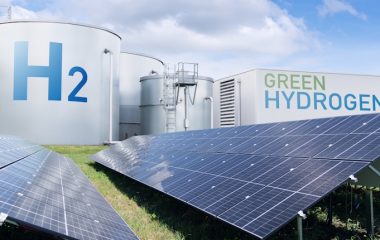
Photo: Bru-nO on Pixabay
The Greek energy system is under stress since last week, as a heatwave pushed the demand for electricity to its highest point so far this year.
Temperatures reached 40-45 degrees Celsius in Greece, meaning that people and businesses have to use air conditioning units at full, increasing demand, while the output from photovoltaics is at its highest level.
Day-ahead data from the Energy Exchange Group (ENEX) showed renewables would cover around 40% of demand on July 18, while that natural gas would account for 33.7%, compared to the share of imports of 10%. Lignite was seen meeting 7.6% of consumption, followed by larger hydropower plants, with 6.1%. The wholesale price was EUR 115 per MWh, much higher than in Western Europe, because Greece uses more natural gas–fired capacity.
Monday’s peak demand was seen at nearly 9.4 GW during the afternoon, according to day-ahead projections of the Independent Power Transmission Operator (IPTO). It was the highest since the beginning of the year. Under more normal circumstances, peak demand is 7 GW to 8 GW. Transactions at ENEX projected the consumption at 220 GWh for the entire day.
IPTO also said photovoltaics would provide 6.1 GW at 13:00. But the peak demand hours are usually between 20:00 and 21:00. Without sunlight there is no solar power while households increase their demand because of air conditioning, cooking and other needs.
As the sun sets, conventional plants on natural gas and lignite and hydropower facilities have to gradually cover the gap left by PV.
It should also be noted that Greece and many other European countries have experienced weekends with very high renewable electricity production and very low or even negative prices in recent months. During such hours and days, renewable energy production has to be curtailed by the operators, resulting in lower profits for producers.
Storage needed to balance system
Energy storage is thus desperately needed to store excess PV production during noon hours and feed it to the system later on as needed.
Greece launched the call for the first auction for incentives this month for storage systems for the transmission grid, for 400 MW in overall operating power. Two more such auctions are scheduled to take place this year, which should provide 1 GW in batteries for the country to complement renewables and begin to stabilize the situation.
Investors are very interested in storage, however they are still waiting for the new National Climate and Energy Plan (NECP) to see what the goal will be for 2030. The Ministry of Environment and Energy floated a preliminary ambition of 8 GW of storage by 2030, but it remains to be seen in the final document, which is supposed to be published soon.









Be the first one to comment on this article.